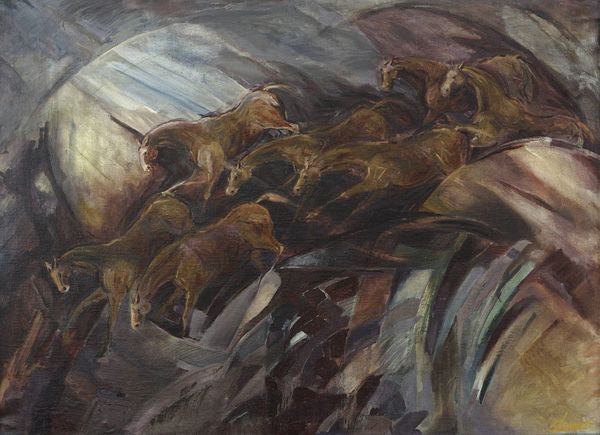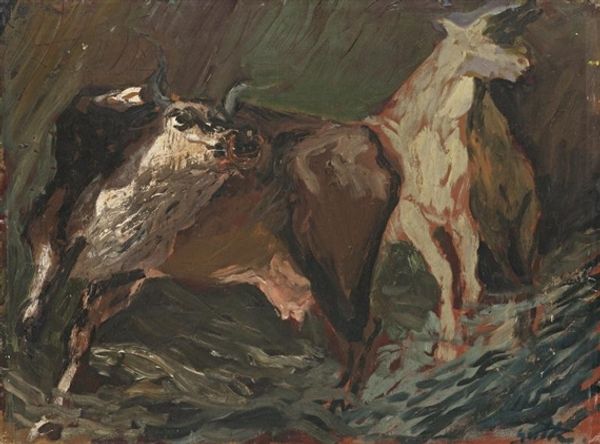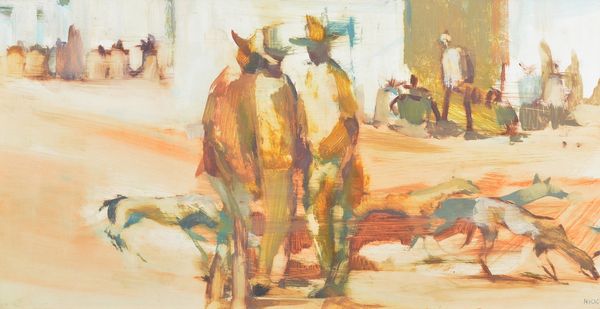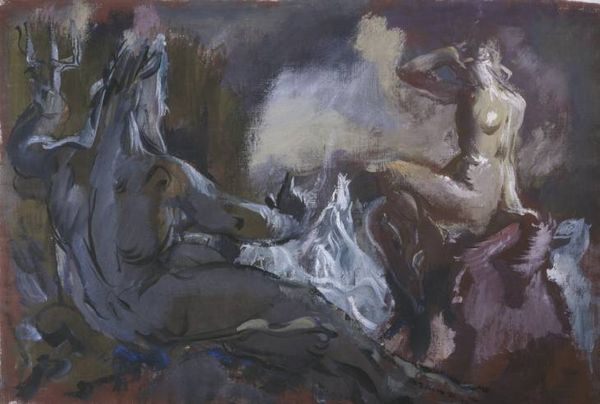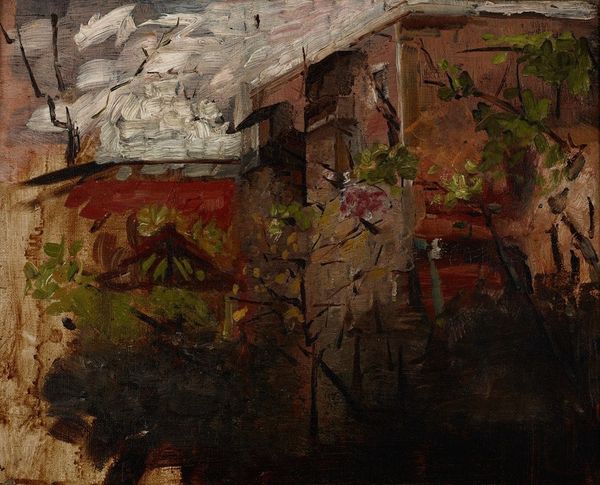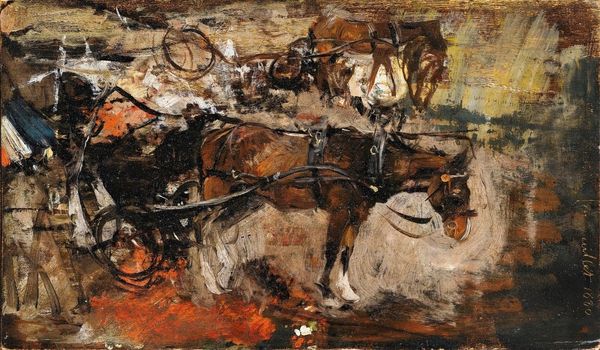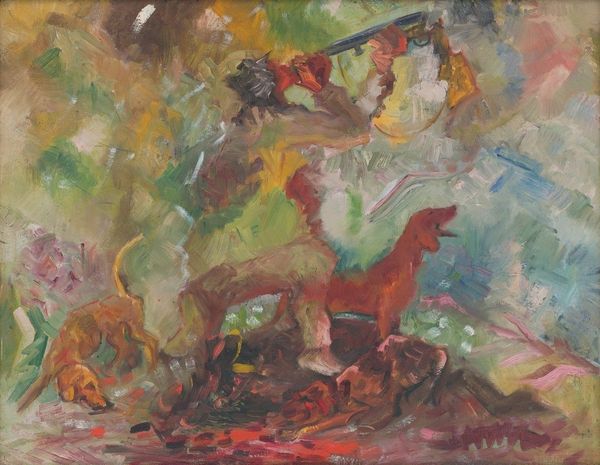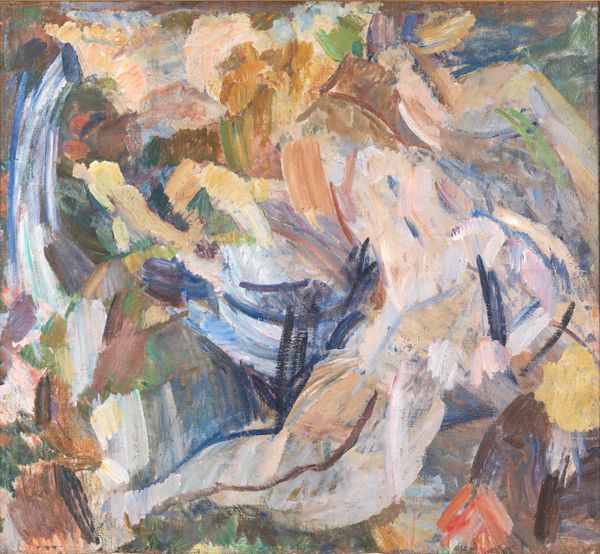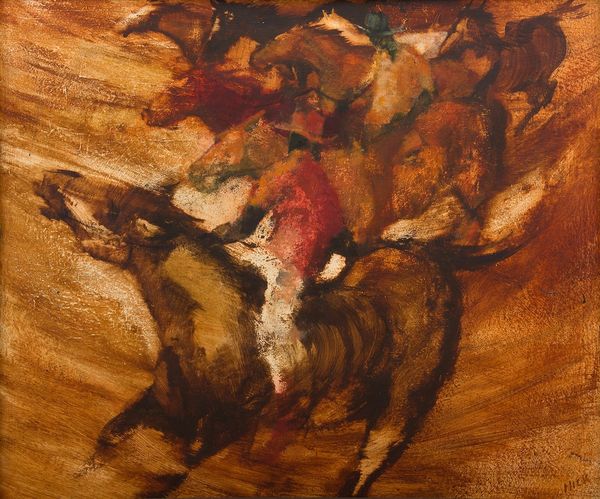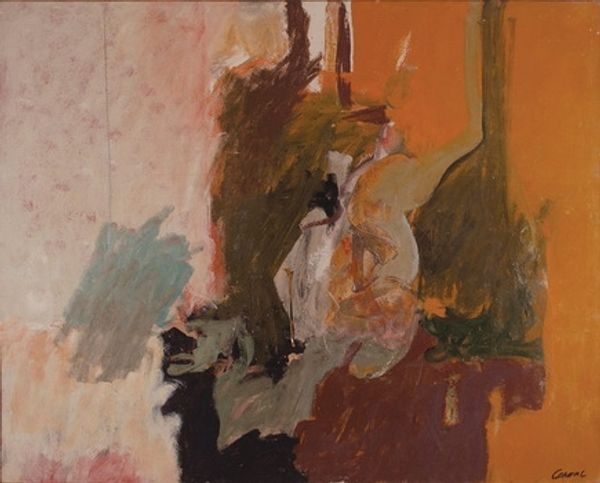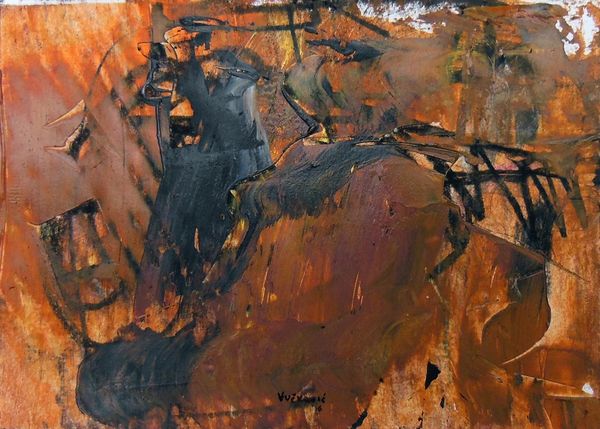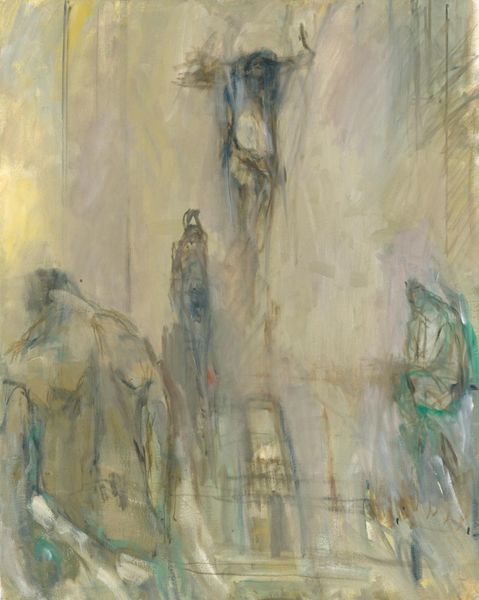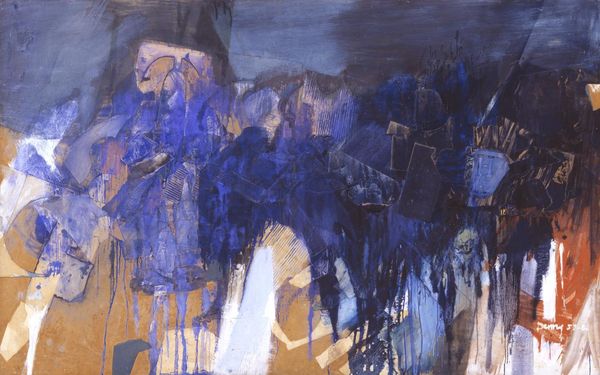
Copyright: Public Domain: Artvee
Curator: I find "Stable at Cuenca", painted in 1903 by John Singer Sargent, unexpectedly moving. The scale, the gloom... It's a slice of life rendered in shadows and light. What's your first take? Editor: Claustrophobic, but undeniably raw. You feel the weight of the animals, the closed-in atmosphere. It speaks to the often unseen labor that sustains life, a sort of… animal economy. Curator: Exactly! Sargent often captures these kinds of in-between moments. Here, the impressionistic brushstrokes give it a feeling of spontaneity, a fleeting observation. Did you notice the thick impasto of the oil paint? It makes the scene almost tactile. Editor: That materiality highlights its gritty realism. Consider the social dynamics inherent to this stable: human dependence on animal labor, the economic stratification present even in this rural setting. Who benefits, and who bears the burden? Curator: Oh, I hadn't thought about it like that. I was lost in the simple beauty of the light filtering in, and how he makes something so… common, so special. Like elevating the everyday. It also humanizes labor by showcasing a genuine interaction between people and animals. Editor: "Elevating" is a loaded term. Are we considering who "common" life excludes? This isn’t merely a slice of idyllic rustic life, it represents exploitation of labor, animal and potentially human, set against broader histories of poverty. We must address who is allowed the luxury of seeing this as 'beautiful' versus who lives within this scene. Curator: I hear you, and you're right. Beauty shouldn't blind us. Perhaps Sargent was trying to highlight that unseen world for a more privileged audience. Editor: Perhaps. Understanding its complexities requires an ongoing effort. Curator: This is the gift of art, right? That a seemingly simple image can be a doorway to so much. I leave now, strangely altered.
Comments
No comments
Be the first to comment and join the conversation on the ultimate creative platform.
